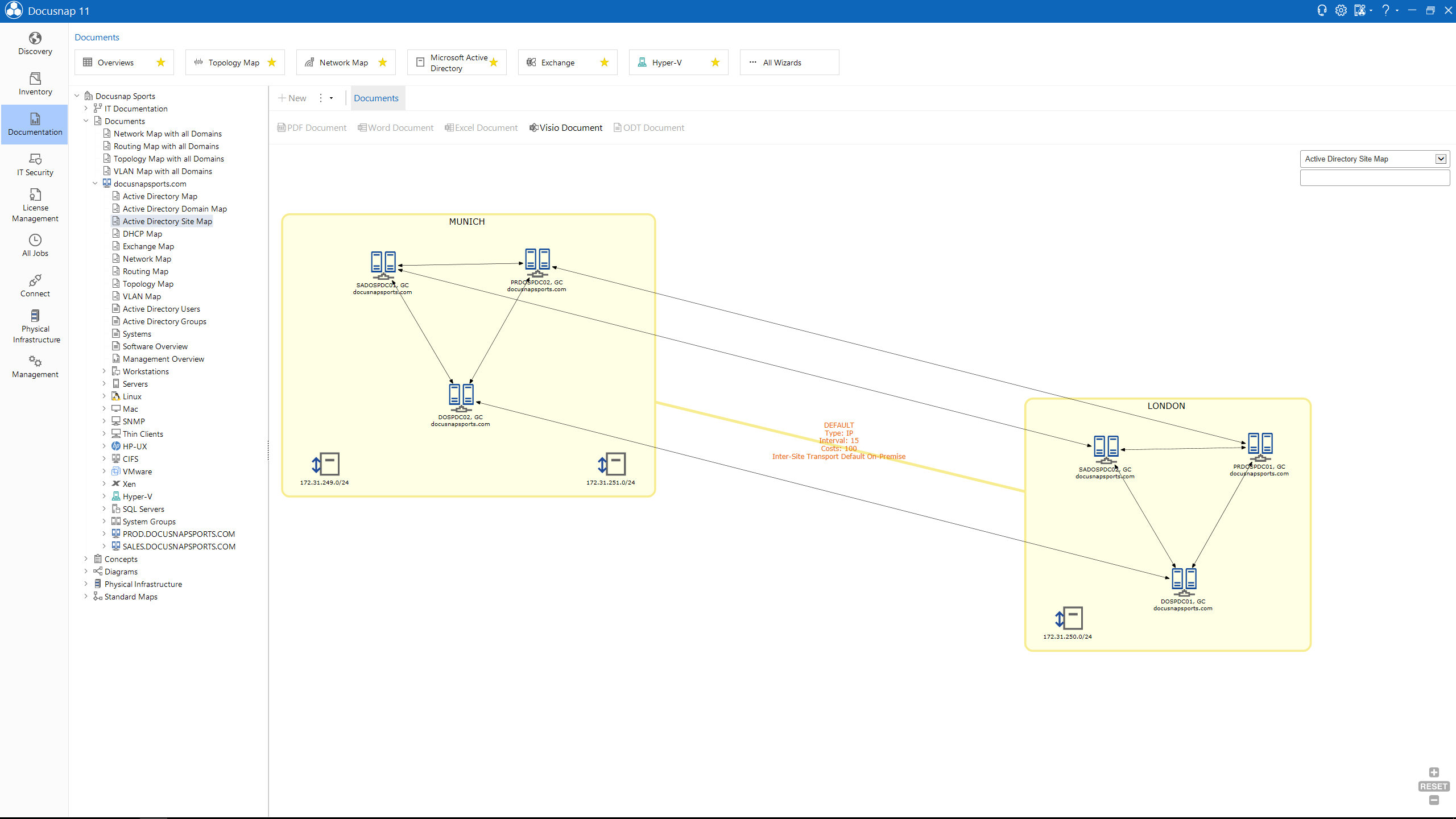Last updated: November 9, 2020
Most IT admins have it, but only a few have an overview of it. We are talking about the Active Directory or AD for short.
The Active Directory is very powerful and helps us to structure and manage our IT network. This is implemented by means of various objects in the network: users, groups, computers, services, servers, file shares and other devices such as printers or scanners. These objects are divided into different domains (DC) and organizational units (OU). This results in a hierarchical Tree structure. In this way, it is possible to uniquely identify each object via its Fully Qualified Domain Name (FQDN). The FQDN is structured as follows:
- ObjectName.OrganizationalUnit.Domain
Example:
- printer01.sales.de
Since the domains can be further subdivided into subdomains, the example could also look like the following:
- printer01.sales.docusnap.de
This schema can be extended at will, resulting in structures that are sometimes extremely complex. Especially in larger companies, this quickly makes the Activity Directory unmanageable. If it is difficult for the IT administrator to maintain an overview, it is completely impossible for superiors, new employees or external service providers.
Inventory Active Directory with Docusnap
Docusnap helps you to keep an overview by summarizing all Active Directory data in detailed lists and clear plans. To better handle these large amounts of data, it can be broken down into all domains, sub-domains and organizational units. Especially the graphical representation of group nesting and memberships is very helpful in security assessments. In addition, all plans can be exported to Microsoft Visio for further processing with just a few clicks.
Using the LDAP protocol, Docusnap can inventory the complete Active Directory. In addition to the standard objects mentioned above, Docusnap also supports any individual schema extensions and also documents the settings and authorizations of each individual object. An intuitive wizard guides you through the inventory process step by step.
Up to date Active Directory data
The automatic inventory of the Active Directory does not only happen once, but at regular intervals that you specify. In this way you are always up to date.
With the help of the resulting inventory history, the Active Directory Comparison Report, as the name suggests, allows you to compare different inventory snapshots with each other. This is extremely useful for determining the cause of a failure.
That’s Docusnap:

